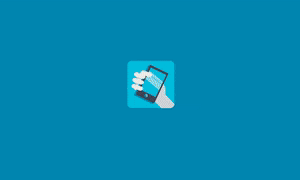
How And When To Rebrand Your Business
If you are looking to Rebrand your business and want to know the details about How and when to Rebrand, then this article will guide you all the way. Have a look at the article How and when to Rebrand. So, without any delay. Let’s dive into the main topic. Every great brand goes through a natural rebranding cycle. But how can you know when it’s time to rename your company? The rush and bustle of workaday craziness frequently obscure the red signals. Even if you do see them, deciding to start on a rebranding campaign is rarely straightforward. What does Rebrand mean? A rebrand is a process of changing the way people think about a company or a product. Everything from a company’s name and slogan to its logo and visual identity to its website and marketing collateral can rebrand. The most successful rebrands begin with a study of current brand views, both within and outside. The research phase’s findings are used to inform the strategy or brand positioning phase, in which a brand is repositioned in response to client requirements and market possibilities. After research and planning, a rebrand moves on to the identity phase, which involves reimagining a brand’s visual and linguistic identities. Logos, colors, typography, and photographs are all part of a company’s visual identity. Names, taglines, and messages are all examples of verbal identity. The identity phase usually concludes with the redesign of a website and/or marketing collateral, which is subsequently published in the brand activation phase. Why rebrand? So, why did you decide to rebrand in the first place? There are several reasons to rebrand. To begin with, having a strong brand increases the likelihood that your clients will select your product or service over the competitors. Strong brands attract more consumers at a lower cost per acquisition, as well as customers who are ready to pay more and purchase more frequently. Strong brands are the cornerstone of real customer loyalty, delivering more revenue, more effectively and reliably, while also increasing shareholder value. A great brand not only helps to establish brand equity but also helps to recruit and keep your company’s next most important asset: its workers. Even the most powerful brands, however, have a shelf life. A brand is only fresh and relevant for five to 10 years due to market vagaries, altering client priorities, and a million otherworldly influences beyond any company’s control. That is why rebranding is so crucial to a company’s success. 5 Indicators That It’s Time to Rebrand Your brand name no longer accurately reflects your company’s mission. A bad brand name is one of the clearest indicators that it’s time to rebrand. It occurs all the time. What looked like a fantastic name 15 years ago no longer reflects the essence of your company. Changes in the cultural environment can sometimes alter the meaning of a name. Sometimes the name just doesn’t feel right for the next generation of the brand. We’d all be using BackRub as our default home page if Larry Page and Sergey Brin hadn’t had the forethought to alter Google’s initial moniker. Whatever the case may be, you should avoid allowing your business’s name to detract from the brand itself. The cornerstone of your brand narrative is a solid name. You don’t want to give someone your business card or website address because you’re ashamed. This is something we see a lot. It’s probably time for a rebrand if you wince a bit when you grab for your business card, or if your website should come with a warning about having to be updated. After all, if you’re embarrassed by your brand, it’s probable that others in your company are, too, and this may stifle both external promotion and internal morale. Being embarrassed by your brand does not necessarily need a complete rebranding. It’s possible that your company’s visual and/or vocal identities just need to be updated. You’re failing to set yourself out from the competitors. Another sign that it’s time to rebrand is when your company starts to look like everyone else’s. At the end of the day, branding is all about differentiating yourself from the competition. However, you’d be astonished at how few businesses can convey — or even define — their critical differentiators. Sales and business growth might be difficult if you don’t have clearly stated differentiators. It’s critical that your workers and consumers both understand why your brand is better than the competition. You’ve made your brand too complex or dispersed. It’s difficult to keep a brand focused over time, especially in huge businesses with many stakeholders with opposing interests. A lack of brand focus, whether the consequence of unrestrained development or just a mismanaged brand, offers severe difficulties to your brand’s efficacy. Diversifying their products or outright imitating the competition, a common tactic adopted by unfocused companies. They’re characterized by a general lack of relevance and weak or imprecise value propositions. Customers will have a tougher time understanding your brand if it’s complicated. Your business strategy or model has changed. When your business model or approach changes, it’s another indicator that it’s time to rebrand. You can’t always foresee the external factors that will drive changes in your firm, as we’ve seen recently. However, when your company model or strategy evolves, your brand must adapt as well. The way your firm is viewed by its customers should always be consistent with how it functions behind the scenes. When it comes to adapting your brand to a fundamental shift in your business, you should start with the basics: your brand compass. Some other signs on when to Rebrand your business are: Your brand has outlived its usefulness. You’re in the middle of a merger or acquisition. You’ve relocated or expanded outside of your initial geographic area. You must separate your brand from bad stereotypes. You’re having trouble raising your pricing. If you’re attempting to reach out to a new group of people. You’re having trouble attracting top talent.











